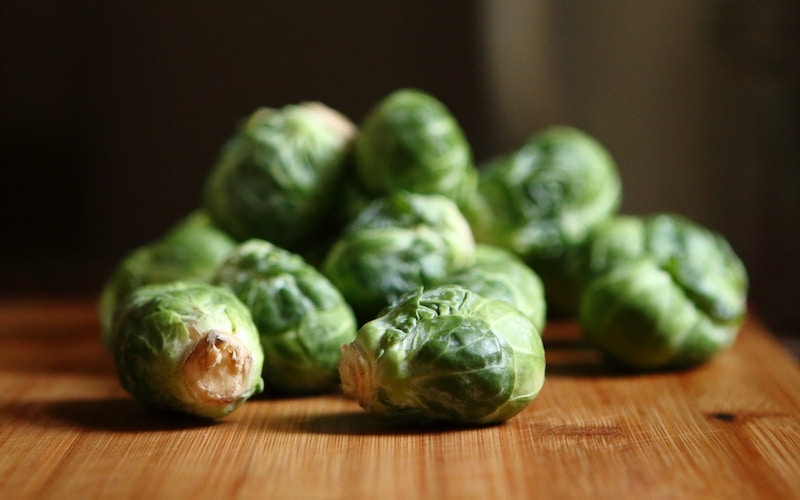Why Smaller Meals Are Better Meals
Episode #5 of the course Hack your diet: Using nutrition science to live healthier, longer, and diet-free by John Robin
Welcome to our fifth diet hack!
Yesterday, we learned about the scary truths of glycation and with them, the dangers of table sugar. We also did so from a reasonable standpoint: Most radical diets fail to stick because they are about avoidance or guilt, and they lead us into a vicious cycle of binging, feeling guilty, and then going to extremes that are hard to maintain, leading to failure and another binge and feeling more guilty, and so on.
That’s not what this course is going to equip you with. We are learning science—specifically, nutrition science—to change our lives for the better. We are equipping ourselves with positive knowledge and using our brain’s highest mindful functions to reprogram how we think about food, taste, and what it means to enjoy the taste of food.
With that, let’s dive into the next lesson: It’s the opposite of binging, in fact!
Eat Small, Eat Mindfully
There is a popular claim in the diet community that six small meals a day is better than the traditional three, but this has been disproven with studies that show that people actually eat the same or more in six small meals than they do with three. However, further research [1] has shown that eating smaller meals throughout the day, rather than just three big meals, is in principle, correct.
Why might that be?
The longer we go without eating, the hungrier we get when we do finally eat, so waiting longer for a big meal means a greater likelihood of overeating. After three hours, our blood sugar falls, then after four, all previous food we’ve eaten has been digested. Hunger now kicks in and with it, pleasure instincts. The urge for good tastes feel exaggerated, and the need for a big dinner feels much more necessary.
There’s the trick to break out of it, however. Instead of thinking of your day in terms of breakfast, lunch, and dinner, think of it in terms of the exact servings of food you aim to eat:
• 6-8 servings of vegetables (ideally taken from your list of staple foods)
• 4-5 servings of fruit (ditto)
• 2-3 servings of grain (ideally whole or unprocessed grains like quinoa, wild rice, or multigrain bread)
• 1-2 servings of nuts and seeds like almonds, peanuts, sunflower seeds, and pumpkin seeds (a great source of magnesium [2])
• 1-2 servings of meat (or other protein sources, like legumes and tofu)
• 1-2 servings of dairy (optional)
Now, as you go through your day, think creatively about how you’re going to get these all in a day. Ideally, avoid eating about four hours before bed. It’s okay to have a larger dinner, but you’ll find that if you eat three to four smaller meals throughout the day, then a smaller dinner will feel more filling.
I have developed quite a Zen in my diet, using a broad repertoire of fruits and vegetables to improvise small meals throughout the day, about three to four hours apart, but I still eat dinner every day. I do this because this is family time, and eating a meal together as a family is highly important to me. But my dinner portions are modest because I’ve usually had a small meal three hours beforehand.
What does a small meal look like? Here’s an example from my own diet:
Breakfast/wakeup meal:
• 1 dried fig
• 1 prune
• 6 almonds
• 5 dried apricot halves (a good source of fiber and other nutrients [3])
• 1 piece of multigrain bread, spread with natural (unprocessed) peanut butter, with 1 tbsp ground flax mixed in
• 1 banana
Later morning meal:
• 3-4 pieces pineapple (or ½ cup red grapes)
• ¼ cup of seven-grain salad mix
Early afternoon meal:
• ½ roasted potato
• ¼ roasted acorn squash
• ½ roasted parsnip
• ¼ roasted onion
• ¼ roasted beet
• 2 roasted Brussels sprouts
• 1 apple (usually I eat this as its own snack on my afternoon walk)
The early afternoon meal might look complicated, but it’s actually easy because I roast those vegetables together once per week, then divide them into daily portions with Tupperware containers.
At dinner, we always cook with several vegetables, and I have an orange afterward. This is the norm for me, and though I deviate during social events, for the most part, this regular diet keeps me healthy and full of energy.
Action: Start Planning Your Small Meals
You have the staple foods already. Now, start creating your own small meals to work through your daily checklist of healthy foods. Try them out, and as you do, be mindful of the taste experience of these foods that will be a new foundation of diet health.
Tomorrow, we’ll move on to another important area: fallacies about meat and dairy. Stay tuned!
Recommended book
Mindless Eating: Why We Eat More Than We Think by Brian Wansink
References
[1] Six Meals a Day for Weight Loss
[2] Pumpkin Seeds
Share with friends

